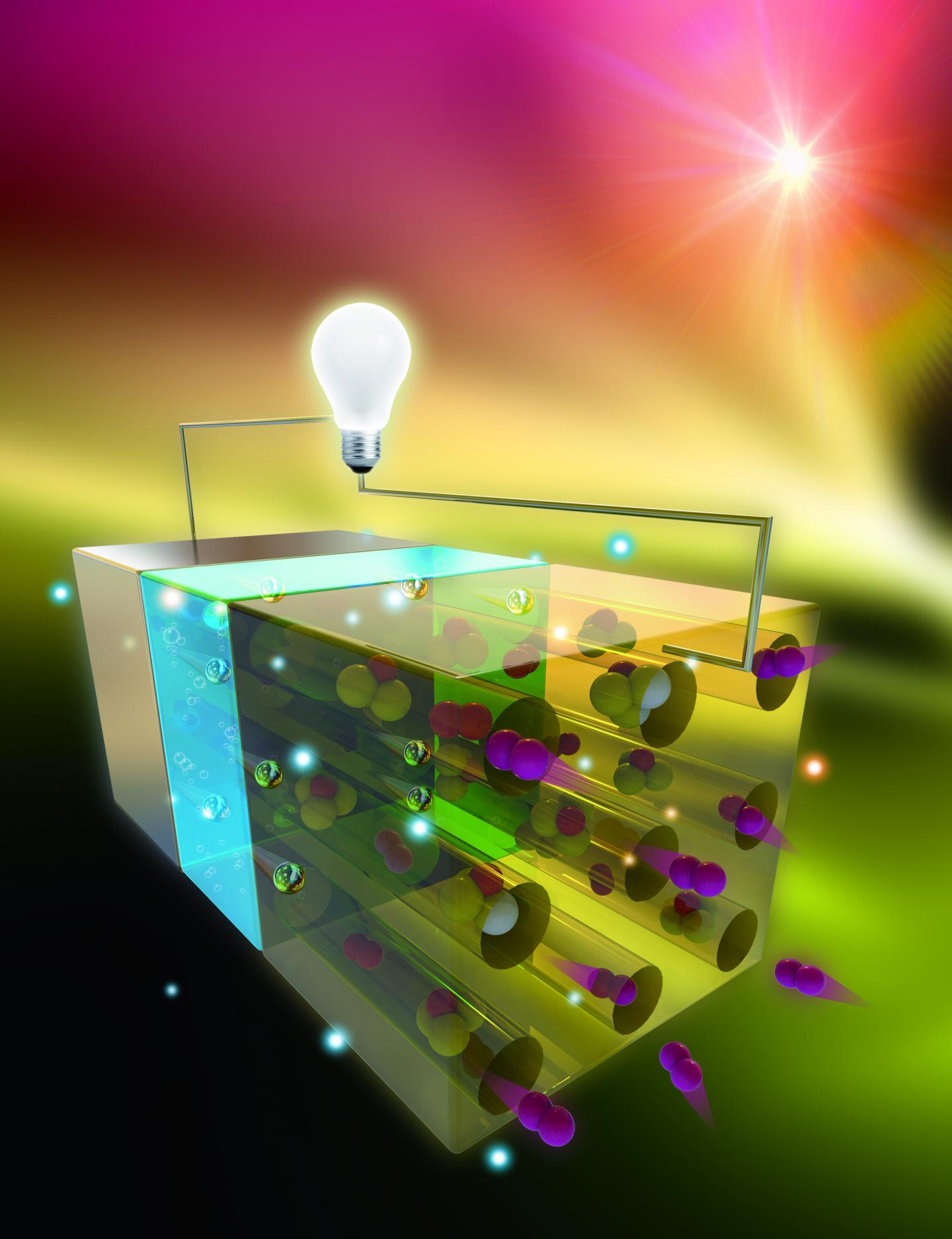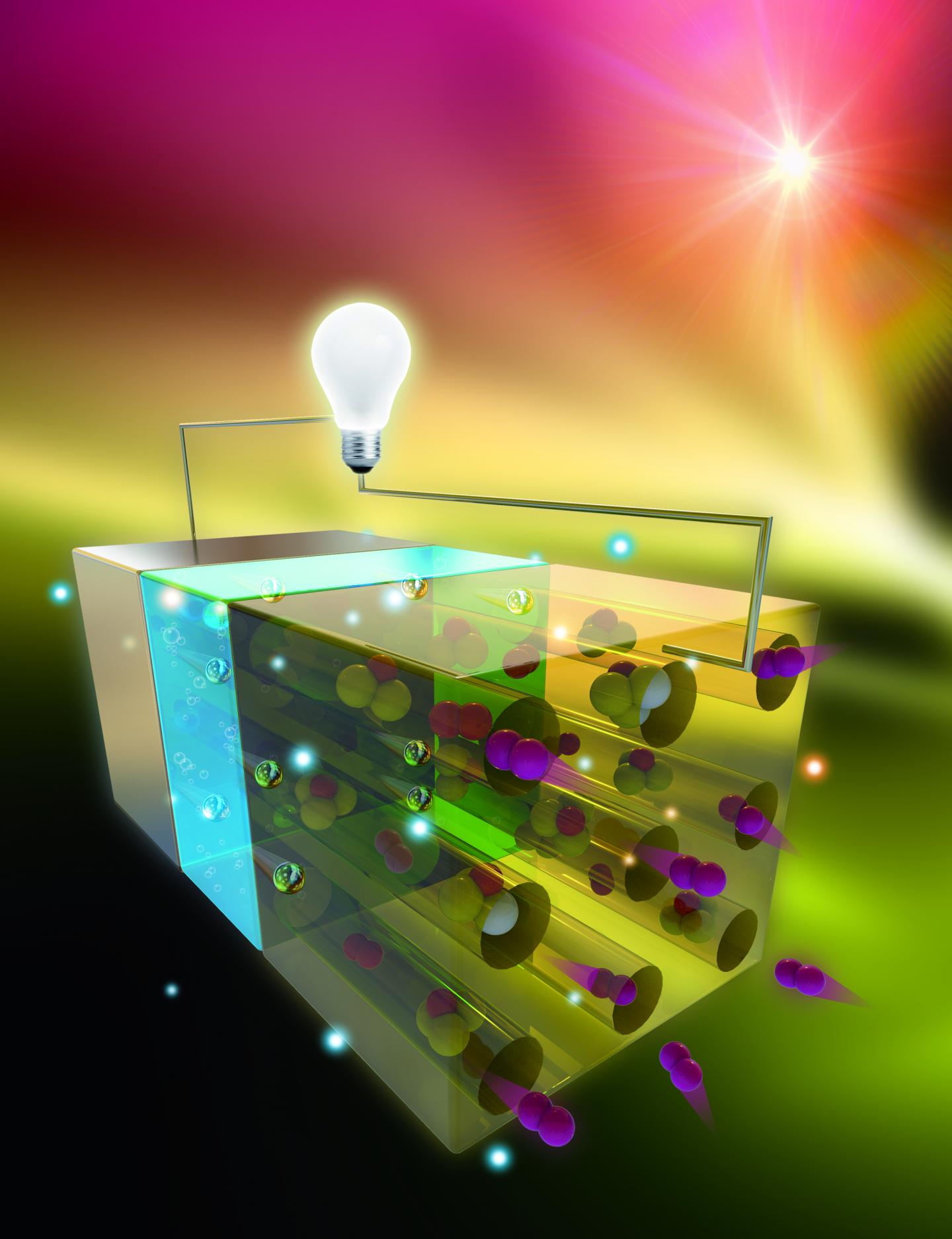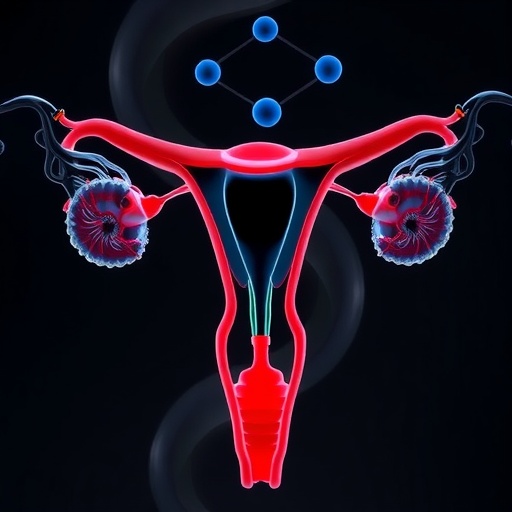
Credit: Zhang et. al.
As the most abundant gas in Earth's atmosphere, nitrogen has been an attractive option as a source of renewable energy. But nitrogen gas — which consists of two nitrogen atoms held together by a strong, triple covalent bond — doesn't break apart under normal conditions, presenting a challenge to scientists who want to transfer the chemical energy of the bond into electricity. In the journal Chem on April 13, researchers in China present one approach to capturing atmospheric nitrogen that can be used in a battery.
The "proof-of-concept" design works by reversing the chemical reaction that powers existing lithium-nitrogen batteries. Instead of generating energy from the breakdown of lithium nitride (2Li3N) into lithium and nitrogen gas, the researchers' battery prototype runs on atmospheric nitrogen in ambient conditions and reacts with lithium to form lithium nitride. Its energy output is brief but comparable to that of other lithium-metal batteries.
"This promising research on a nitrogen fixation battery system not only provides fundamental and technological progress in the energy storage system but also creates an advanced N2/Li3N (nitrogen gas/lithium nitride) cycle for a reversible nitrogen fixation process," says senior author Xin-Bo Zhang, of the Changchun Institute of Applied Chemistry, part of the Chinese Academy of Sciences. "The work is still at the initial stage. More intensive efforts should be devoted to developing the battery systems."
###
This work is financially supported by the Ministry of Science and Technology of China and the National Natural Science Foundation of China.
Chem, Ma and Bao et al.: "Reversible Nitrogen Fixation Based on Rechargeable Lithium-Nitrogen Battery for Energy Storage" http://www.cell.com/chem/fulltext/S2451-9294(17)30129-8
Chem (@Chem_CP) is the first physical science journal published by Cell Press. The sister journal to Cell, Chem provides a home for seminal and insightful research and showcases how fundamental studies in chemistry and its sub-disciplines may help in finding potential solutions to the global challenges of tomorrow. Visit http://www.cell.com/chem. To receive Cell Press media alerts, contact [email protected].
Media Contact
Joseph Caputo
[email protected]
617-397-2802
@CellPressNews
http://www.cellpress.com
############
Story Source: Materials provided by Scienmag





